I just saw PARTY GIRL (1995) for the first time and we need to talk about it.
PARTY GIRL is a film where fashion isn’t just part of the aesthetic, it’s actually an integral part of the storytelling. Parker Posey’s Mary, a club-hopping socialite turned accidental librarian, serves as the film’s chaotic heart, and her wardrobe reflects her evolution. Mary is a walking mood board of vintage treasures, high-fashion drama, and club-kid rebellion, each outfit more memorable than the last. The film’s costume designer, Michael Clancy, perfectly captures the energy of ‘90s New York club culture with a mix of vintage designer pieces, wild prints, and unexpected layering. Every outfit Mary wears feels like a statement, reflecting her transformation from party-hopping free spirit to a woman figuring out her next move.
It was hard to choose a piece to focus on from this film because nearly every single outfit in it had me gasping and taking notes on my phone. There was the Todd Oldham leopard coat with red skirt combo that I think about probably on a daily basis. The red Vivian Westwood corset and Todd Oldham rhinestone hotpants that I wish 20-year-old me had thought about wearing on a night out. Another standout ensemble is Mary’s red satin Chinese-style dress, worn as she moves around a house party, of course, and it perfectly embodies the ‘90s obsession with East-meets-West fashion. Mary pairs the dress with chunky black platform sandals and a messy updo, an effortless styling trick echoed in recent collections by Blumarine, where feminine slip dresses are toughened up with bold accessories. Clancy explained that this particular look was thrifted, a nod to Mary’s character as someone who scours vintage stores for hidden gems. In today’s era of Depop and curated vintage Instagram shops, Mary’s approach to fashion feels more relevant than ever.
Mary has countless outfits worthy of discussion in this post, but what ultimately impressed me the most was her use of gloves and how they set each outfit off.
Gloves appear a few times throughout the film, adding an almost old-school elegance to Mary’s otherwise eclectic, DIY-esque wardrobe. Whether she’s wearing red leather gloves with leopard print or adding satin blue gloves to add a pop of color, they give her outfits a sense of drama and polish.
But more than just a cool styling choice, the gloves actually help tell Mary’s story. They add a bit of theatricality, almost like she’s always in costume, shaping her identity through fashion. And that’s really what PARTY GIRL is all about: reinvention, playing with different versions of yourself, and not being afraid to mix the past with the present. In a movie packed with iconic looks, the gloves stand out as a perfect example of how a single accessory can ultimately elevate a vibe.
Gloves have been part of the fashion landscape for centuries, with examples found as early as ancient Egyptian tombs. But it was in medieval Europe that gloves became a true status symbol. Kings, queens, and popes wore elaborate, embroidered gloves to emphasize their power, and knights received them as tokens of favor from their ladies. During the Renaissance, gloves became more extravagant; Queen Elizabeth I’s jewel-encrusted pairs emphasized her untouchable divinity, and she often removed them with dramatic flair to draw attention to her hands.
In the Victorian and Edwardian eras, gloves became an everyday necessity—especially for women. Bare hands in public? Unthinkable. Gloves were a sign of refinement, and the longer they were, the more formal the occasion; elbow-length satin gloves were reserved for formal evening wear, while wrist-length leather gloves were daytime essentials. This trend carried well into the early 20th century, with Hollywood’s golden age solidifying gloves as a symbol of grace and sophistication, though Art Deco designs introduced sleeker silhouettes and bold colors.
Costume dramas use gloves both to stay historically accurate and to enhance character development. In BRIDGERTON, the women’s delicate gloves reinforce the constraints of society as hands were rarely touched without layers of fabric in between. In contrast, when Keira Knightley’s Elizabeth Bennet in PRIDE & PREJUDICE forgoes gloves at a formal dance, it’s a subtle way to show that she’s not as bound by social rules as others. Another example of this is in TITANIC; in the beginning of the film, Kate Winslet’s Rose wears long gloves to symbolize her life of wealth and restriction. But by the time she’s on the ship’s deck with Jack, she’s abandoned them, representing her growing freedom.
Post-WWII fashion emphasized hyper-femininity, and gloves were essential to the era’s polished aesthetic. Actors like Audrey Hepburn in BREAKFAST AT TIFFANY’S and Grace Kelly in REAR WINDOW solidified gloves as symbols of elegance, often paired with cinched waists and pearls. Marilyn Monroe’s hot pink opera gloves in GENTLEMEN PREFER BLONDES are still one of the most recognizable fashion moments in film history.
In film noir and classic Hollywood, gloves became shorthand for mystery, wealth, and deception. Characters like Rita Hayworth’s Gilda famously removed a single glove in an act of controlled seduction, while femme fatales in films like DOUBLE INDEMNITY and THE BIG SLEEP used gloves to conceal their secrets (and sometimes their crimes).
In haute couture, designers such as Balenciaga and Givenchy frequently incorporated gloves to enhance the drama of their creations. The 1950s and early 1960s were the golden age of gloves in women’s fashion, thanks in large part to the influence of film and high society. Dior’s NEW LOOK made them essential for achieving that ultra-feminine, polished aesthetic, and Hollywood followed suit.
The countercultural movements of the 1960s led to gloves falling out of mainstream fashion, especially as youth culture rejected their associations with formality and social hierarchy. But that didn’t mean they vanished entirely; they just got edgier instead. Punk and new wave artists reinterpreted gloves as rebellious statements, and the 1980s saw gloves return as high-powered accessories. Debbie Harry and Madonna often wore them in lace or leather as an effortlessly cool accessory, while Michael Jackson’s single sequined glove became one of the most famous accessories ever. DYNASTY featured them with an air of opulence, and designers like Thierry Mugler used them to sculpt exaggerated silhouettes.
Meanwhile, villains and femme fatales in film were still making great use of them. Michelle Pfeiffer’s Catwoman in BATMAN RETURNS used her clawed leather gloves as both a fashion statement and a weapon, taking the idea of gloves as a sign of power to a whole new level. Gloves are essential in superhero and sci-fi costuming. Batman, Catwoman, and The Joker all use gloves as part of their hyper-stylized personas, whether to conceal identity, enhance combat skills, or create a theatrical effect. In contrast, menacing figures like Darth Vader used gloves to heighten their untouchable, authoritarian presence. Trinity’s leather gloves embody cyberpunk cool in THE MATRIX, while in DUNE, gloves are part of the Fremen’s survivalist gear, reinforcing the film’s world-building.
Minimalist ’90s fashion saw a decline in gloves but they remained a fixture in gothic, fetish, and avant-garde fashion. Alexander McQueen, John Galliano, and Jean Paul Gaultier frequently used gloves to evoke historical and theatrical references. In recent years, celebrities have also revived gloves as a symbol of both old Hollywood glamour and edgy futurism. Beyoncé at the 2023 Grammys in black, elbow-length gloves was a study in elegance and edge, while Rihanna at the Met Gala in white fingerless gloves was a perfect mix of vintage and modern styles.
Recent media in film and television have revived gloves in literal and conceptual ways. EUPHORIA has popularized sheer opera gloves as a Gen Z party trend, while AMERICAN HORROR STORY often uses gloves as eerie, gothic elements. Even reality TV has embraced the drama—the queens of RuPaul’s DRAG RACE often pair gloves with over-the-top couture, proving their lasting impact on visual storytelling. Miranda Priestly in THE DEVIL WEARS PRADA frequently wore gloves, reinforcing her cold, unshakable authority in the fashion world, and movies like POOR THINGS used gloves to build a distinctive visual language for its quirky, Victorian-inspired world.
Whether they’re making a high-fashion comeback, adding drama to a movie scene, or symbolizing power and mystery, gloves continue to shape both fashion and film. While they may not be daily essentials today, their ability to transform a look (and a character) ensures their place in style history.
Why the outfit works: Every outfit Mary wears has an element of fun, and the use of accessories throughout the film is truly a sight to behold. The gloves add something unexpected to each look but are also immediately perfectly in line with her character. “We never wanted her to feel like she was giving up her identity,” Clancy noted to Vogue. “Even at her most ‘serious,’ Mary is still Mary.” That refusal to conform, to blend in, is exactly what makes PARTY GIRL such a lasting source of fashion inspiration.
Where to find similar pieces:
Banana Republic / Cashmere-Lined Short Leather Gloves / $150
I really love the shorter length on this pair, and if I were to add a second pair of red gloves to my collection, this is the one I’d add to my cart right away (and let’s be honest, I probably will by the end of the day).
MANOKHI / Short Leather Gloves / $155
This pair reminds me of the actual Party Girl era, and they’re also on sale right now for $76.
Bloomingdale’s / Cashmere Lined Long Leather Gloves / $98
Another cashmere-lined pair, this one is in a slightly deeper shade of red and goes higher up the wrists for a look that combines warmth and fashion.
Solo Classe / Long Red Italian Leather Gloves / $139
I couldn't finish this piece without the one elbow-length pair of gloves, purely for the drama they would add to any look. This pair is silk-lined for extra luxury.
Are you ready to add some gloves to your spring looks? What color would you try?
XO, H




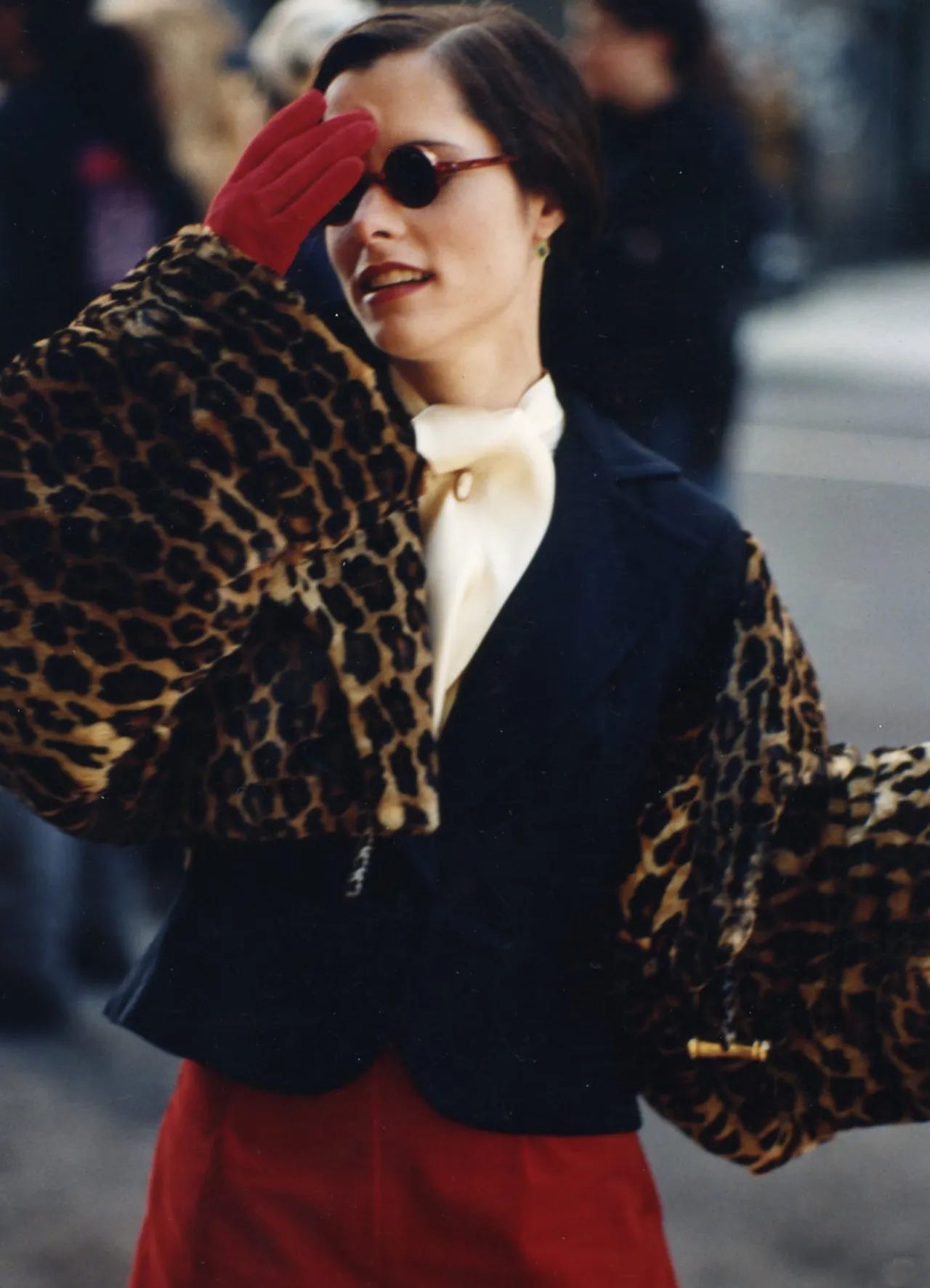


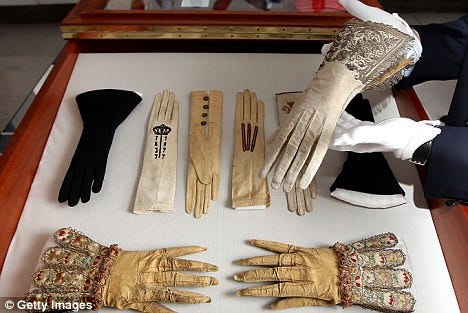
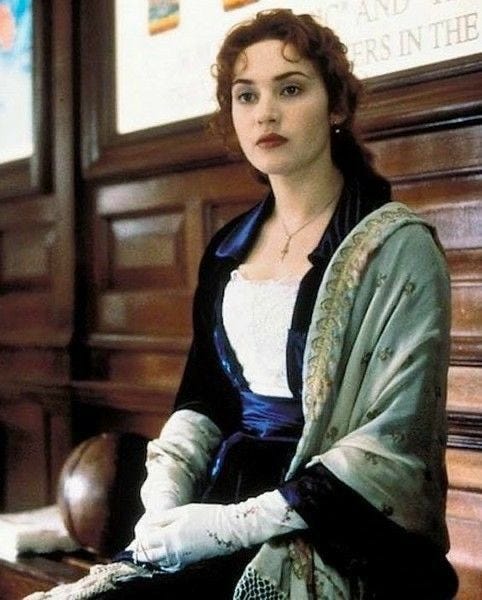
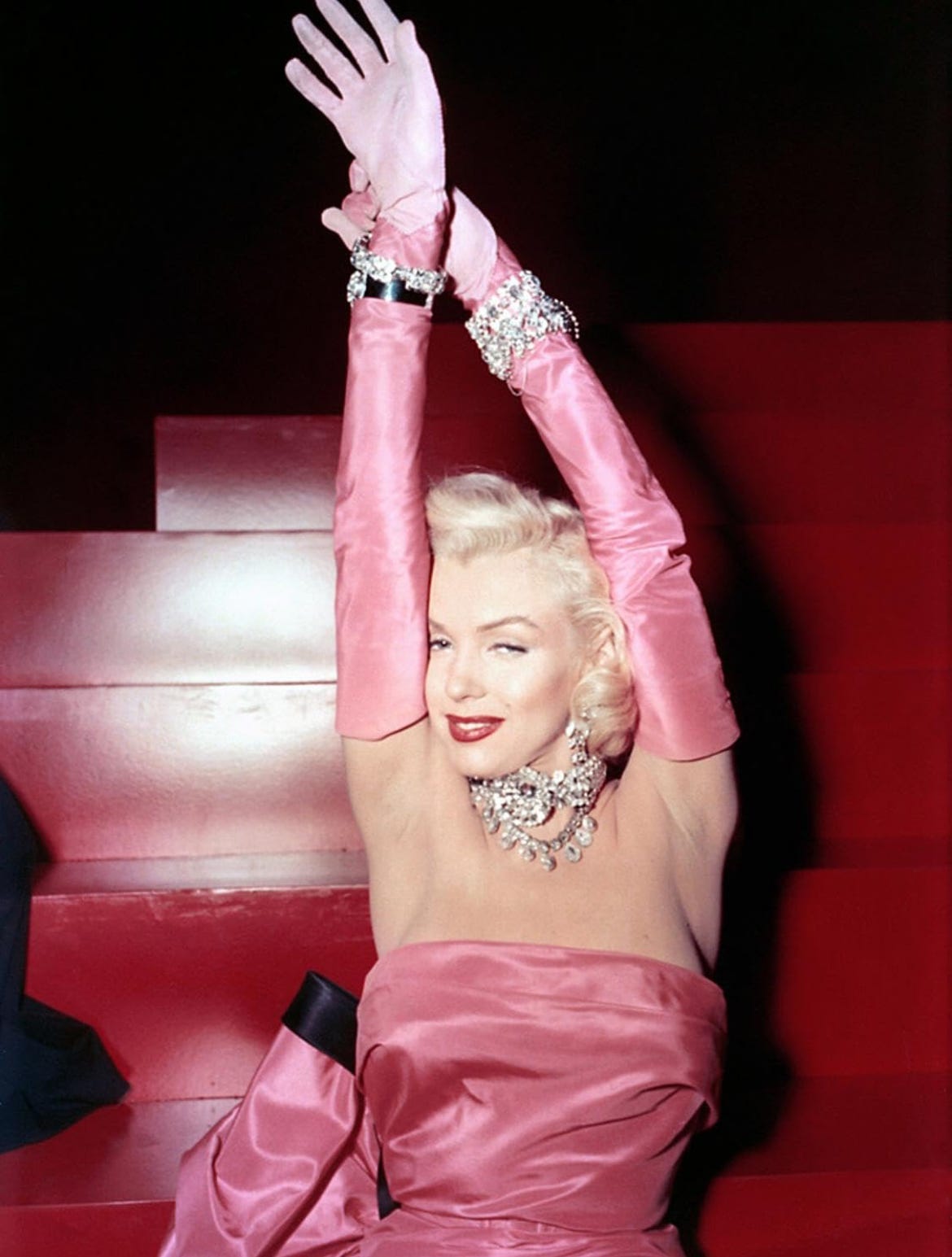


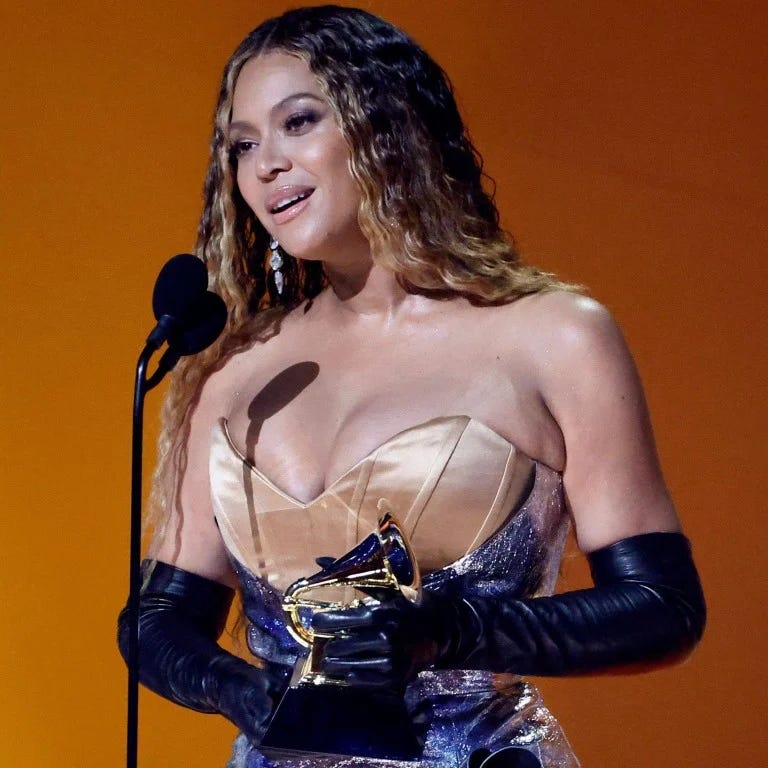

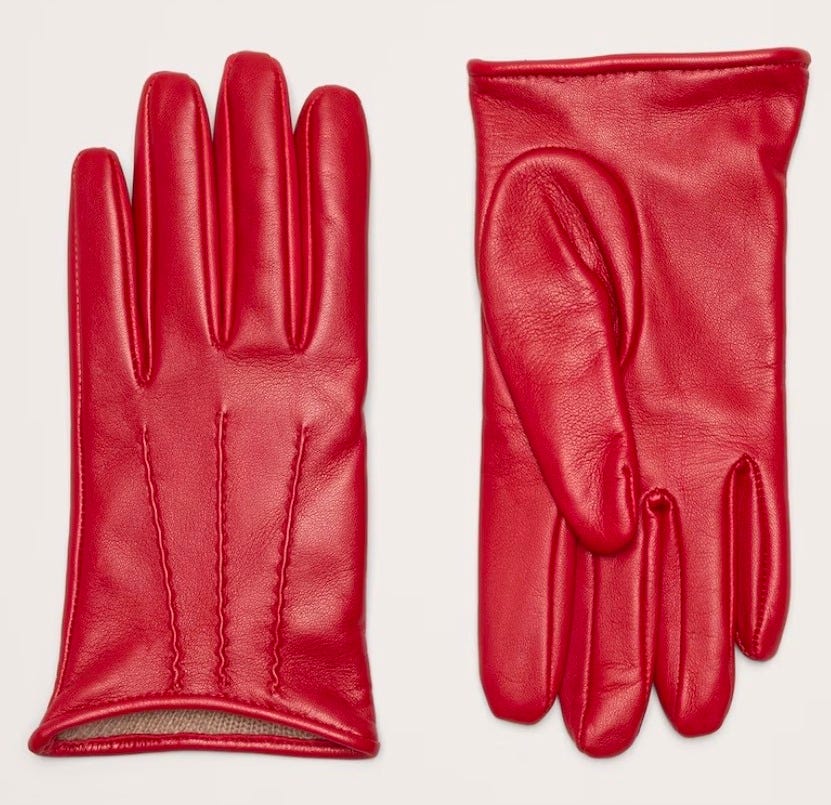



“Even at her most ‘serious,’ Mary is still Mary.” That refusal to conform, to blend in, is exactly what makes PARTY GIRL such a lasting source of fashion inspiration."
!!!
adding gloves to my cart right now